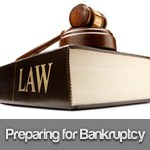Fixed Asset Accounting Made Easy
It’s probably true that for many business owners the thought of fixed asset accounting is likely to have them running for the hills.
However, the reality is that it doesn’t have to be complicated if you understand it. With this in mind here’s how to account for fixed assets and what it entails.
First of all, it’s important for any business to carry out thorough accounting procedures. Primarily to comply with procedures, but also to ascertain what your company is really worth. In essence as far as accounting is concerned, there are two types of asset and these are current and fixed.
Current Assets
Current assets are probably the easiest to recognise and are things like cash holdings, stocks and shares and company stock holding. The value of these assets are constantly changing as the business moves on and are therefore classed as short term. In fact when people think of assets, this is generally what is brought to mind.
Fixed Assets
Fixed assets on the other hand, remain pretty much stationary and are an asset that is intended for continuing use, or long term company value. There are in fact three types of fixed asset and these are known as tangible, intangible and investments. So what’s the difference?
Tangible Fixed Assets
Tangible assets include items such as land, buildings, property, machinery and vehicles and can include fixtures and fittings and any IT equipment that the company holds.
Intangible Fixed Assets
This is a little more complex and includes net worth of any patents, trademarks or branding that the company owns. These have a value and therefore have to be accounted for.
Investment Fixed Assets
Finally investments are any share value which has been invested in other companies or ventures.
How do you Determine the Cost of a Fixed Asset?
As already mentioned, all assets should be costed for accounting purposes. So it’s important to take a look at what an asset is worth. Although fixed price assets remain stationary, as you grow with your business their value may be changing. A prime example is property. Clearly the property market is going through a problematic time at present and the value of a piece of land or owned building may not be as much as it was a couple of years ago. Therefore an accounting valuation should reflect the price it’s worth when the current round of fixed asset accounting is being done.
Useful Life of a Fixed Asset
When accounting for a fixed asset, it may be important to note that the majority of them will indeed have a shelf life. Although expert care and maintenance is likely to prolong the life of the asset they will eventually reach the stage where they are no longer needed by the company, or they need to be replaced. In some cases a company may not want to keep an asset right until the end of its physical life. Instead it could be that changes in technology mean that it’s no longer a viable option. All of these are considerations to be taken when calculating cost including
Depreciation
Estimated economic life
Any income from sale of item
As you can see, fixed asset accounting doesn’t have to leave you in a state of panic. Instead look on it as something that has to be done. In fact, if done correctly it will ensure that your business not only complies with the law, but gives you and others a good idea of your company’s true monetary value. Fixed asset register management software can make tracking all of your assets simple.




